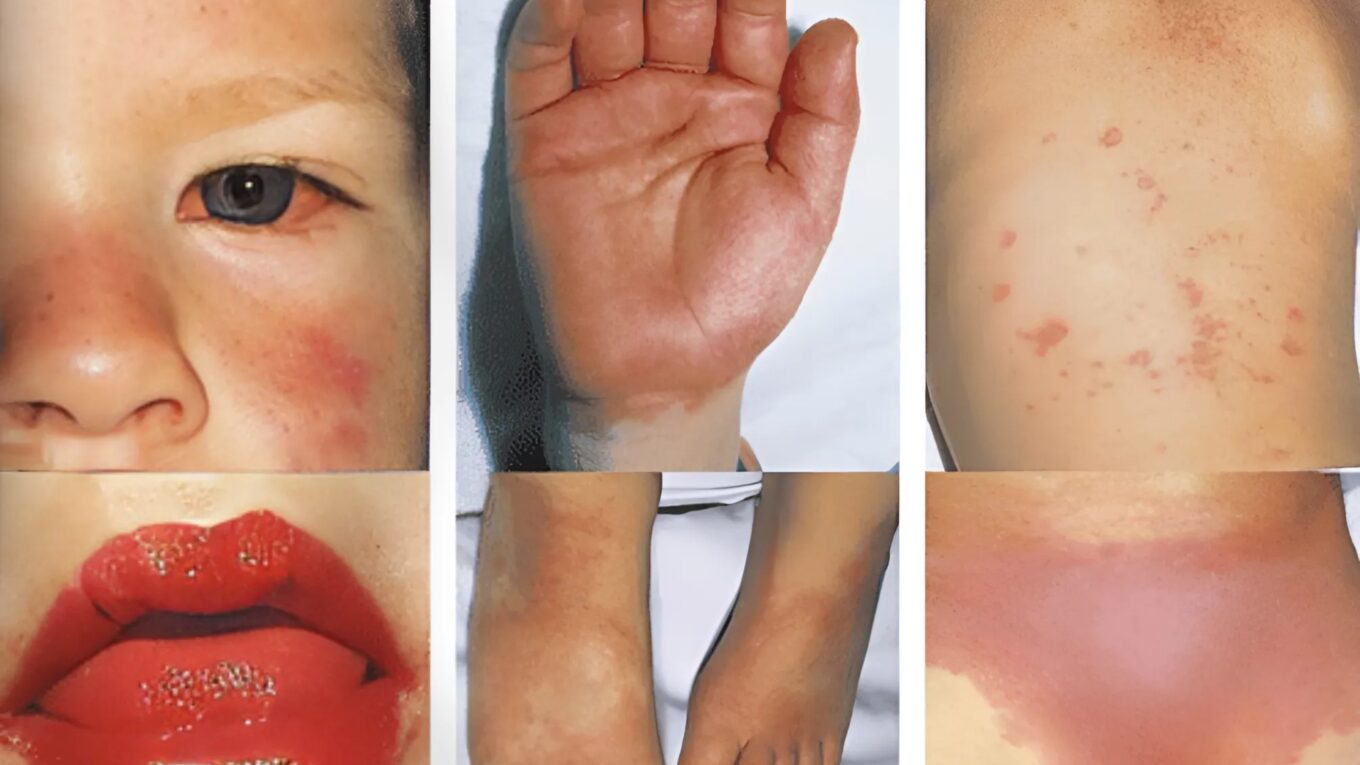Click here to Visit Facebook Page
Introduction:
Mucocutaneous Lymph Node Syndrome (MLNS), also known as Kawasaki disease, is a rare but serious condition that primarily affects children, causing inflammation in blood vessels throughout the body. Despite its rarity, MLNS can lead to severe complications if not diagnosed and treated promptly. This blog aims to provide a comprehensive overview of MLNS, including its symptoms, causes, diagnosis, and treatment options.
What is Mucocutaneous Lymph Node Syndrome?
Mucocutaneous Lymph Node Syndrome, often referred to as Kawasaki disease, is an autoimmune condition characterized by inflammation of blood vessels, particularly medium-sized arteries. While the exact cause of MLNS remains unknown, it is believed to involve a combination of genetic predisposition and environmental triggers.
Click here to Visit Facebook Page
Symptoms of MLNS:
MLNS typically presents with a constellation of symptoms, which can vary in severity from mild to severe. Common symptoms include:
1. High fever persisting for five days or more.
2. Rash, often resembling a sunburn and affecting the trunk and extremities.
3. Redness and swelling of the hands and feet, sometimes accompanied by peeling skin.
4. Redness and irritation of the eyes, resembling conjunctivitis.
5. Swollen lymph nodes, particularly in the neck region.
In addition to these primary symptoms, MLNS can lead to complications affecting the heart and blood vessels, such as coronary artery aneurysms, if left untreated.
Click here to Visit Facebook Page
Causes of MLNS:
The exact cause of MLNS remains elusive, but researchers believe that a combination of genetic predisposition and environmental factors may play a role in its development. Some theories suggest that MLNS may be triggered by viral or bacterial infections, as the condition often occurs in clusters and epidemics. However, no specific infectious agent has been consistently identified as the cause.
Diagnosis of MLNS:
Diagnosing MLNS can be challenging due to its varied presentation and the absence of specific diagnostic tests. Healthcare providers typically rely on a combination of clinical symptoms and laboratory findings to make a diagnosis. Key diagnostic criteria include:
1. Presence of fever persisting for five days or more.
2. Presence of at least four of the following symptoms: rash, redness and swelling of the hands and feet, redness and irritation of the eyes, swollen lymph nodes, and changes in the oral mucosa.
3. Exclusion of other possible causes of the symptoms, such as infections or autoimmune disorders.
In some cases, additional tests such as blood tests, echocardiography, and electrocardiography may be performed to assess the extent of vascular involvement and rule out other conditions.
Click here to Visit Facebook Page
Treatment of MLNS:
Early recognition and prompt treatment of MLNS are crucial to prevent complications and reduce the risk of long-term damage to the heart and blood vessels. The primary goal of treatment is to reduce inflammation and prevent coronary artery aneurysms. Treatment options may include:
1. Intravenous immunoglobulin (IVIG): IVIG is a therapy that involves administering high doses of immunoglobulins to help modulate the immune response and reduce inflammation.
2. Aspirin: High-dose aspirin therapy may be prescribed to reduce fever and inflammation. However, aspirin should be used with caution, especially in children, due to the risk of Reye’s syndrome.
3. Supportive care: Supportive measures such as hydration, pain management, and monitoring for complications are essential components of MLNS management.
4. Follow-up care: Patients diagnosed with MLNS require regular follow-up care to monitor their cardiac health and assess for any long-term complications.
Click here to Visit Facebook Page
Prognosis:
With prompt treatment, the majority of children with MLNS recover fully without experiencing long-term complications. However, a small percentage of patients may develop coronary artery abnormalities, including aneurysms, which can increase the risk of cardiovascular events later in life. Close monitoring and appropriate management are essential for optimizing outcomes and preventing future complications.
Conclusion:
Mucocutaneous Lymph Node Syndrome, or Kawasaki disease, is a rare but potentially serious condition that primarily affects children. While the exact cause of MLNS remains unknown, early recognition and prompt treatment are essential for reducing the risk of complications and improving outcomes. Healthcare providers play a crucial role in diagnosing MLNS and implementing appropriate treatment strategies to ensure the best possible outcome for affected children. Further research is needed to better understand the underlying mechanisms of MLNS and develop more effective treatment approaches.





